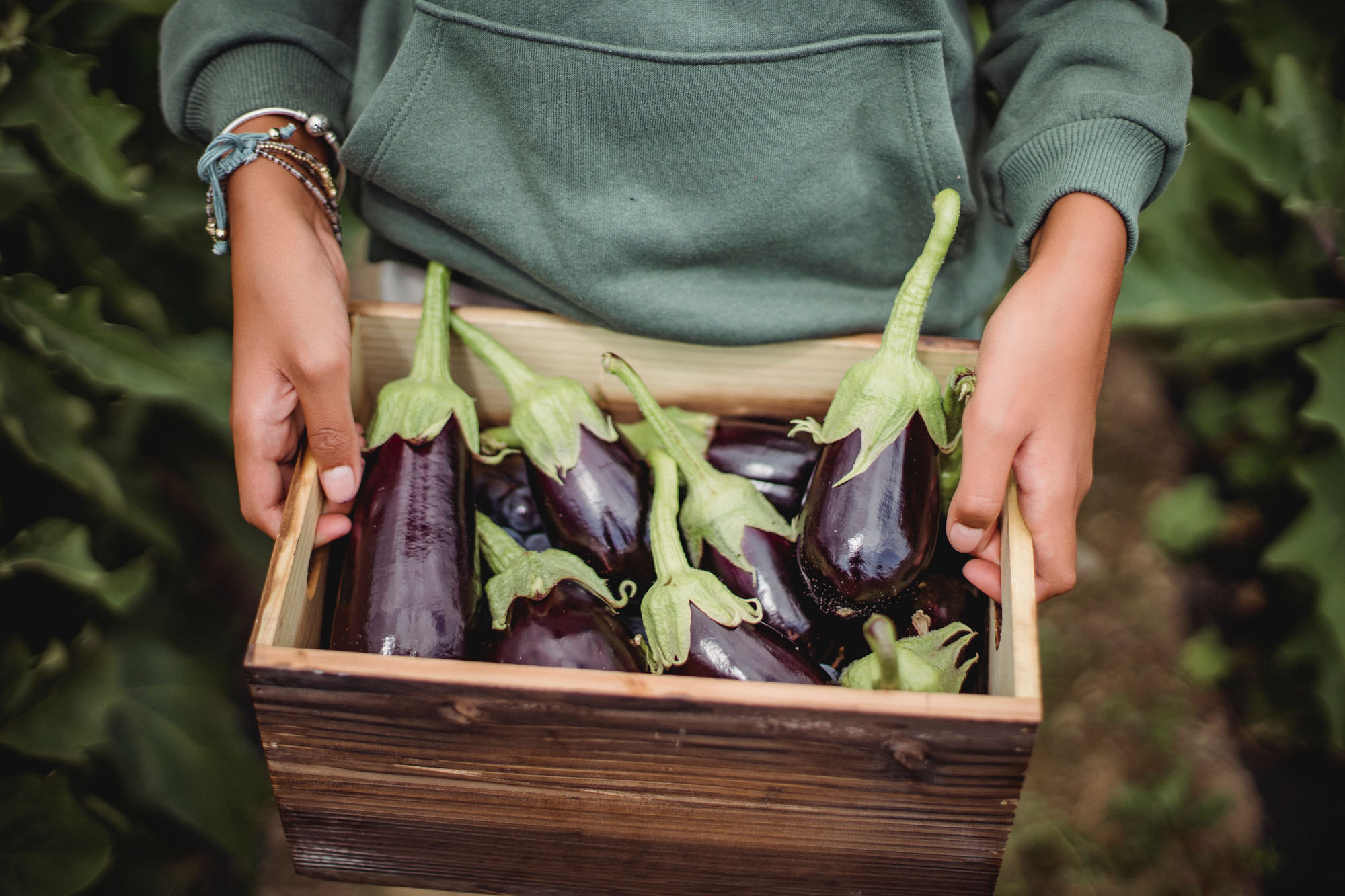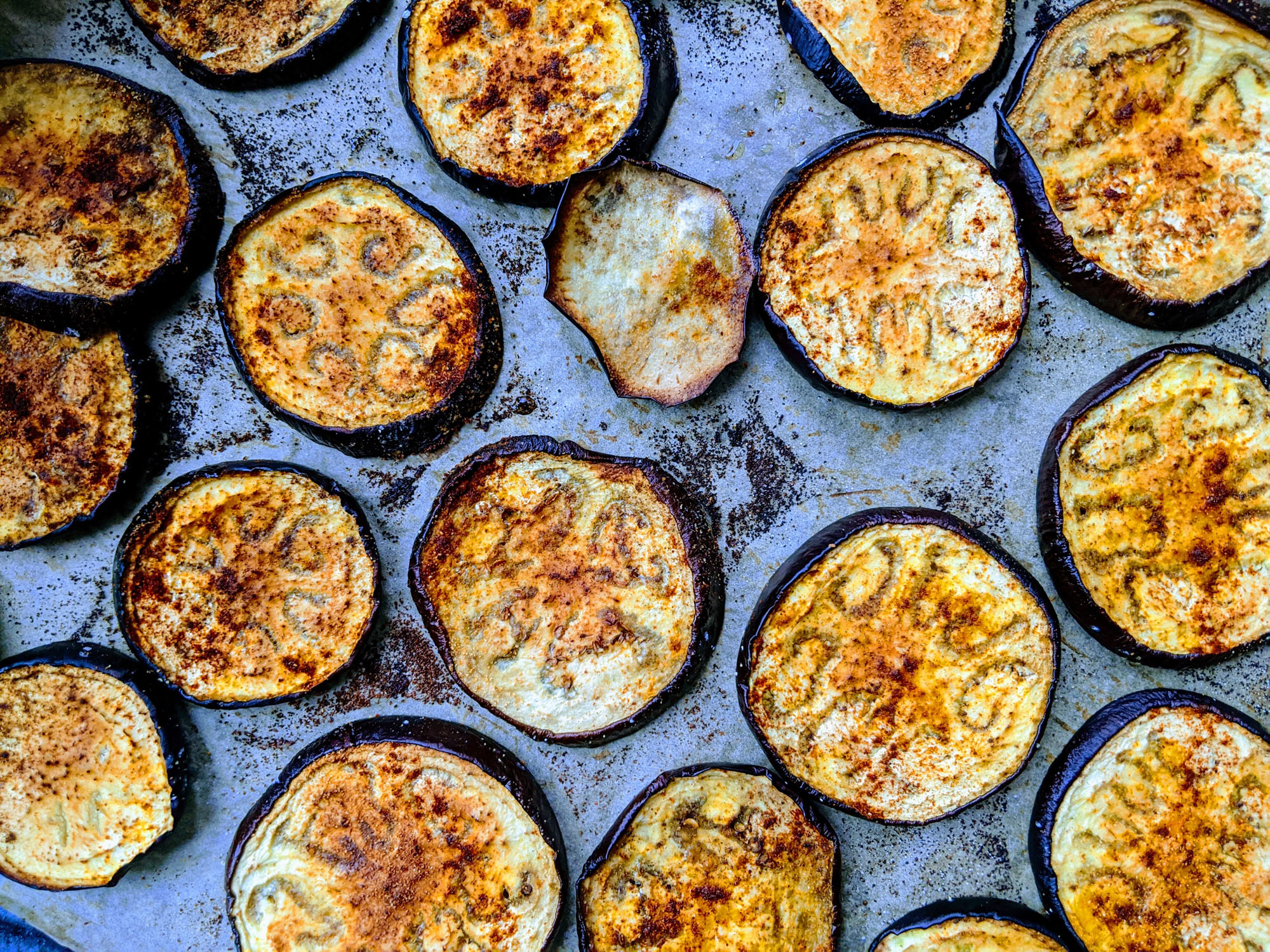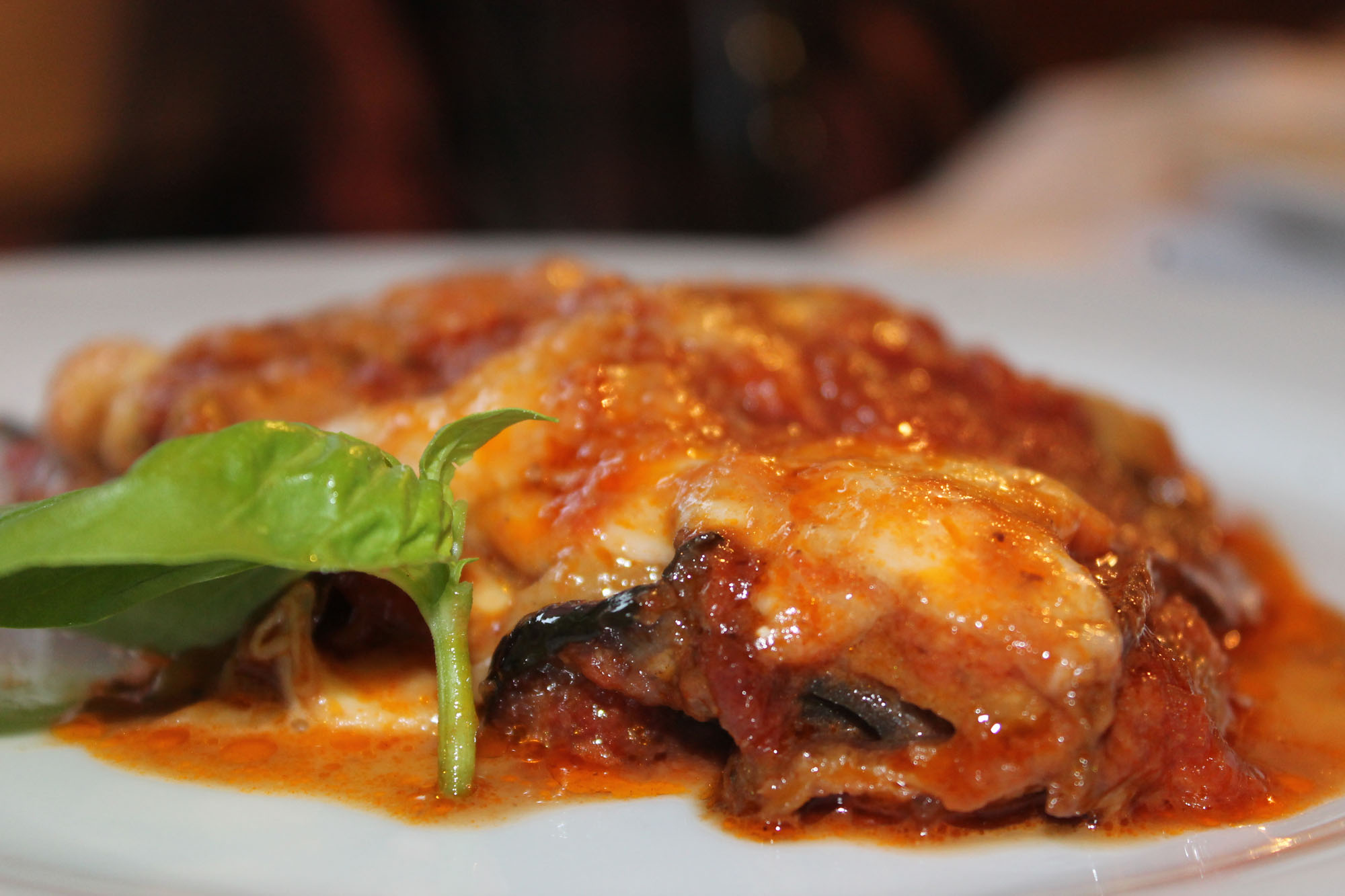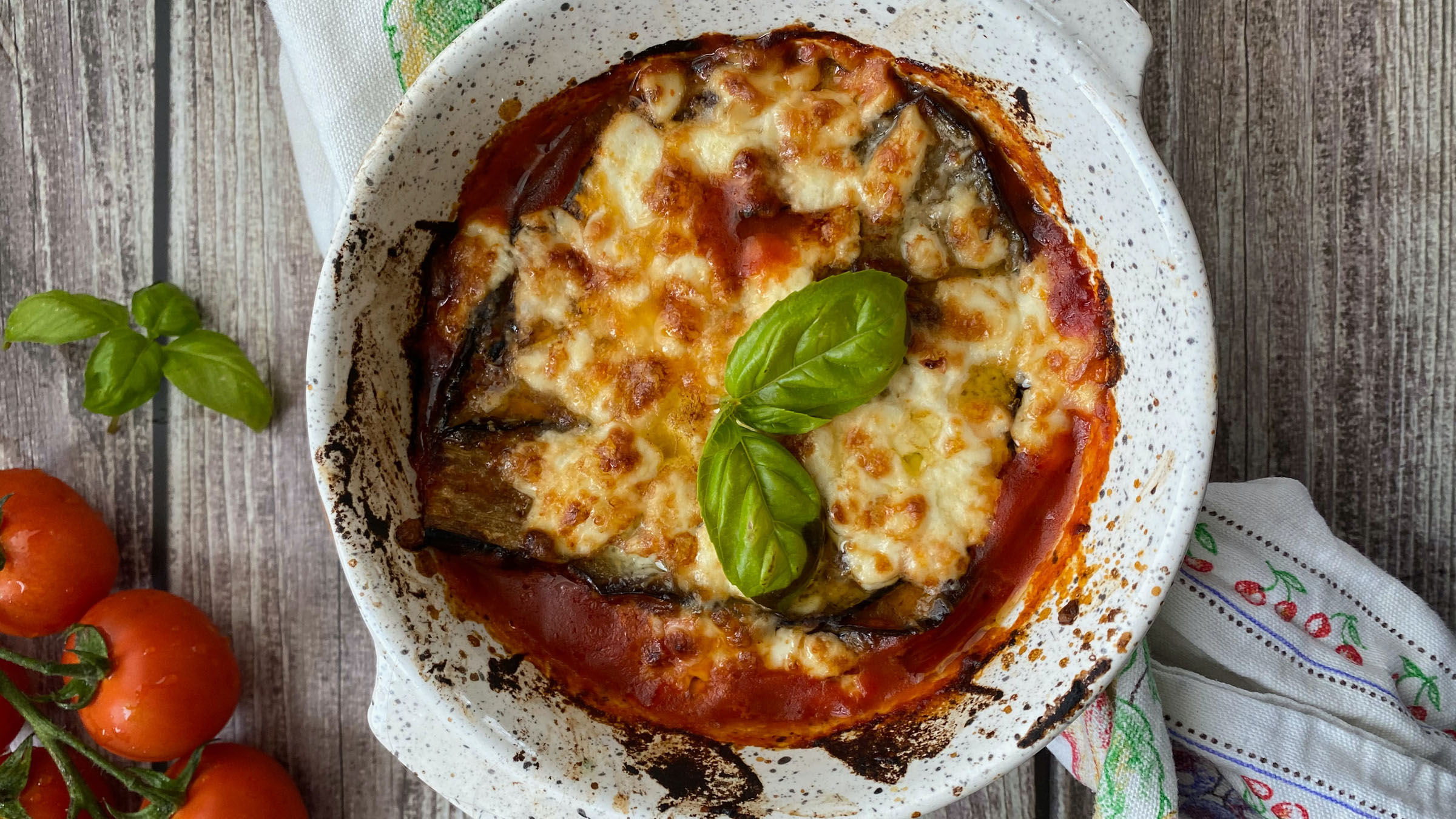Whether it’s a sunny weekend that calls for a picnic in the park, or even a chilly, drizzly day that’s better spent in the warmth of your house, there’s one place in the world where both seemingly opposite occasions call for the very same dish: a richly stuffed, dripping-in-oil eggplant parmesan, or parmigiana di melanzane, from southern Italy.
Join us on a taste expedition as we seek out the secrets and origins – and original recipes – of one of the most controversial yet beloved of Italian dishes, which in theory divides but eventually brings everyone together to embrace a world of flavours.

The History
Eggplant parmesan (also known as eggplant parmigiana, aubergine parmesan, aubergine parmigiana – we could go on) is one of the most beloved Italian dishes across the globe. However, as is often the case when it comes to Italy, its origins are the object of dispute, specifically between three main regional contestants: Sicily, Campania and Emilia-Romagna.
Though even the most comprehensive essay wouldn’t suffice to cool tempers in this matter, we still feel it germane to provide a historical outline of this umpteenth culinary clash within the Belpaese (as Italians often refer to their homeland). Considering that Italy has been transited through or ruled by numerous foreign powers over the millennia, it’s no surprise that many various influences have taken root in the cultural soil – gastronomy included. The case is heating up…
The word parmigiana may derive from the Sicilian word parmiciana, which refers to the horizontal wooden slats of a window shutter, or perhaps from the Turkish word patlıcan, meaning aubergine. Such an etymological investigation may already provide enough fodder for a satisfying argument, if the Age of Discovery had not come into play to muddy the waters. With rampant European exploration, expansion and trade overseas came the importation of new ingredients and culinary techniques, which chefs at royal courts readily embraced and experimented with, fusing them with traditional ways of cooking. One result was the alla parmesana technique, in which different foods (initially only meat, then later vegetables) were combined and layered in a pot or pan.
With aubergines having been first introduced to Sicily and Magna Graecia in the late Middle Ages by Arab traders (who had in turn imported them from India), and tomatoes from the Americas gaining serious popularity after 1700, this cooking method very slowly worked its way into the heart of Italian cuisine.
Leaderboard:
Sicily 1 :: Emilia-Romagna 0 :: Campania 0

The Origins
The first person to record alla parmegiana recipes – adopting the name that comes closest to the current Italian form parmigiana – and the first to propose this method for both aubergines and courgettes (also with tomato sauce among the layers), was the Apulian chef Corrado Vincenzo, author of Il Cuoco Galante (The Gallant Cook) in 1773.
Sixty years later – as if there wasn’t enough material to review in this complicated journey backwards in time – cook and author Ippolito Cavalcanti noted the presence of grated Parma cheese (parmigiano) in the dish in his cookbook Cucina teorico pratica (Theoretical-Practical Cuisine). The plot thickens…
Leaderboard:
Sicily 1 :: Emilia-Romagna 1 :: Campania 0
Though the richness of Neapolitan gastronomy and mozzarella cheese as undisputed protagonists of the modern eggplant parmesan would seem to speak for itself, Naples and its surrounding region of Campania would seemingly remain out of the picture if it weren’t for evidence that popped up in the United Kingdom at the turn of the 20th century.
In their 1903 book The Gourmet’s Guide to Europe, Lieutenant Colonel Nathaniel Newnham-Davis and Algernon Bastard – who asked “any travelling gourmet” about “delightful dining-places across Europe” – wrote: “There is an excellent Neapolitan method of treating eggplants, fried in oil, cut in slices, sandwiched with cheese and tomatoes, and then baked.”
If British gourmands can be trusted, this is the olive branch that puts an end to an age-old dispute.
Leaderboard:
Sicily 1 :: Emilia-Romagna 1 :: Campania 1

[Photo: Schellenberg/Wikimedia Commons]
The Dos & Don’ts
It should be noted that the writer of this article is Sicilian through and through, and as such, she must warn the reader that any recipe deviating from the one used by Sicilian grannies – deep-frying oily slices of eggplant in hot peanut oil and passing them to hungry kids together with a chunk of fresh bread right before sitting down for the sacred Sunday lunch – should be approached with caution.
Unless your dietary requirements absolutely demand it, in no way should you trust eggplant parmesan recipes telling you to use grilled, boiled or coddled slices of aubergine. Just. Don’t. Do. It. Under penalty of getting banned forever from the Italian Boot. After all, it’s no coincidence that among the thousands of different Italian recipes for and variations on parmigiana di melanzane, the ingredients layered with the aubergines may vary, but it is never called into question that the latter must be fried.
Necessary preamble (and clichés) aside, here we offer two recipes, one traditional and one alternative, that will lift you to the highest levels of pure culinary delight – not to blow our own trumpets, of course.
Original Sicilian Recipe: Parmigiana di Melanzane
(Eggplant Parmesan or Aubergine Parmesan)
Ingredients (serves 6):
750ml tomato purée or 2 400g cans of crushed tomatoes
2-3 cloves of garlic, according to your preference
About 200g grated Parmigiano Reggiano or Grana Padano cheese
2 or 3 large aubergines
2 balls of mozzarella cheese (about 125g each – vegan or lactose-free, if desired)
A few slices of mortadella or ham, if desired
Fresh basil leaves
Extra virgin olive oil (2 or 3 teaspoons)
Salt, to taste
Preparation:
Preheat a convection oven to 180°C.
Thoroughly wash the aubergines and cut them into slices no thicker than 5mm. To ensure that they dehydrate properly and are not bitter on the palate, sprinkle them with coarse salt and let them drain for at least an hour, or immerse them in salted water for at least 30 minutes. Then dry them well with kitchen roll.
In the meantime, we can devote ourselves to the preparation of the traditional tomato sauce: Pour the tomato puree/crushed tomatoes into a pot, crush the preferred amount of garlic into the pot, and let it all cook over low heat on the hob, simmering the sauce for at least 20-30 minutes. Add salt and a little pinch of sugar to cut the acidity of the tomatoes (add sugar ONLY if you’re using store-bought crushed/puréed tomato, rather than stewing fresh tomatoes). Turn off the heat, then add the olive oil and the previously washed basil leaves.
In a large separate pan, heat up a generous amount of peanut oil and start frying the eggplant slices a few at a time. Once cooked, lay them on sheets of absorbent paper to allow them to cool and drain excess oil.
Now it’s time to assemble the parmigiana: spread a thin layer of tomato sauce at the base of a rectangular baking dish (alternatively, if you prefer a less ‘saucy’ dish, use a layer of breadcrumbs here and leave out the sauce). Then add the first layer of fried aubergine slices (let them overlap a bit, there’s no magic in adopting engineering measures in the kitchen), and cover with tomato sauce first, then the grated parmesan cheese, the slices of mozzarella and the mortadella. Repeat the whole process until all the ingredients are used up. As a last layer, top with tomato sauce and grated parmesan.
Bake the parmigiana for at least 25 minutes. The result will be an exquisite dish best enjoyed while steaming hot, but it’s still incredible when served cold the next day.
Alternative Recipe: Parmigiana Bianca di Zucchine
(Courgette Parmesan without Tomato Sauce)
View this post on Instagram
Ingredients:
800g courgettes
200g smoked ham
2 balls of mozzarella cheese (about 125g each)
200g smoked provola or provolone cheese
About 200g grated Parmigiano Reggiano or Grana Padano cheese
Extra virgin olive oil (2 or 3 teaspoons)
Salt and pepper, to taste
Very fine breadcrumbs
Preparation:
To prepare this alternative version with courgettes, simply follow the above-described process, using grilled courgettes instead of fried aubergines (we can waive the policy just this once), and bake the entire delicious dish in a static (non-convection) oven at 200ºC.
The Takeaway
What better dish than this to grasp the concept of cultural harmony – the original ‘fusion’ cuisine, connecting history, soul and palate to fully grasp how boring the world would be if cultural identity weren’t imbued with universality. Buon appetito!














Sorry, the comment form is closed at this time.